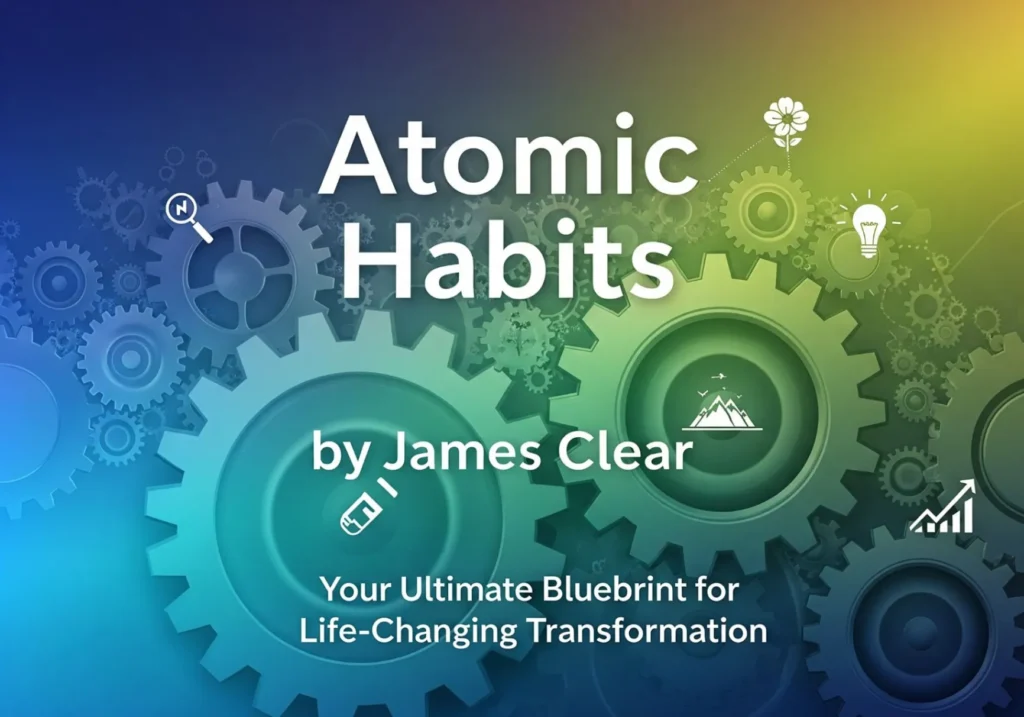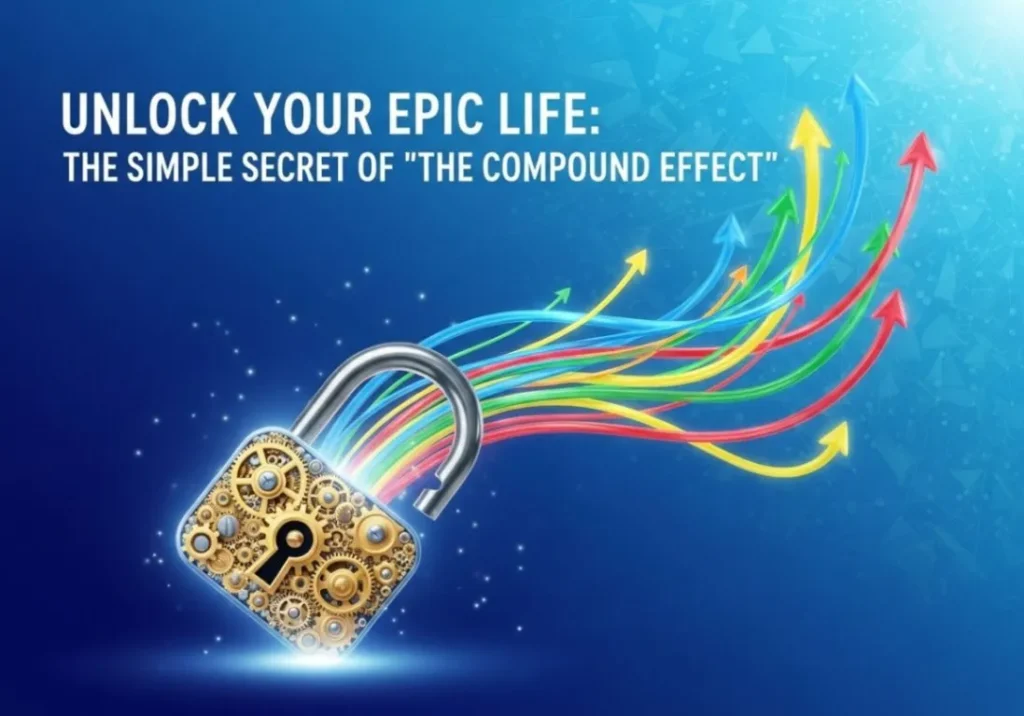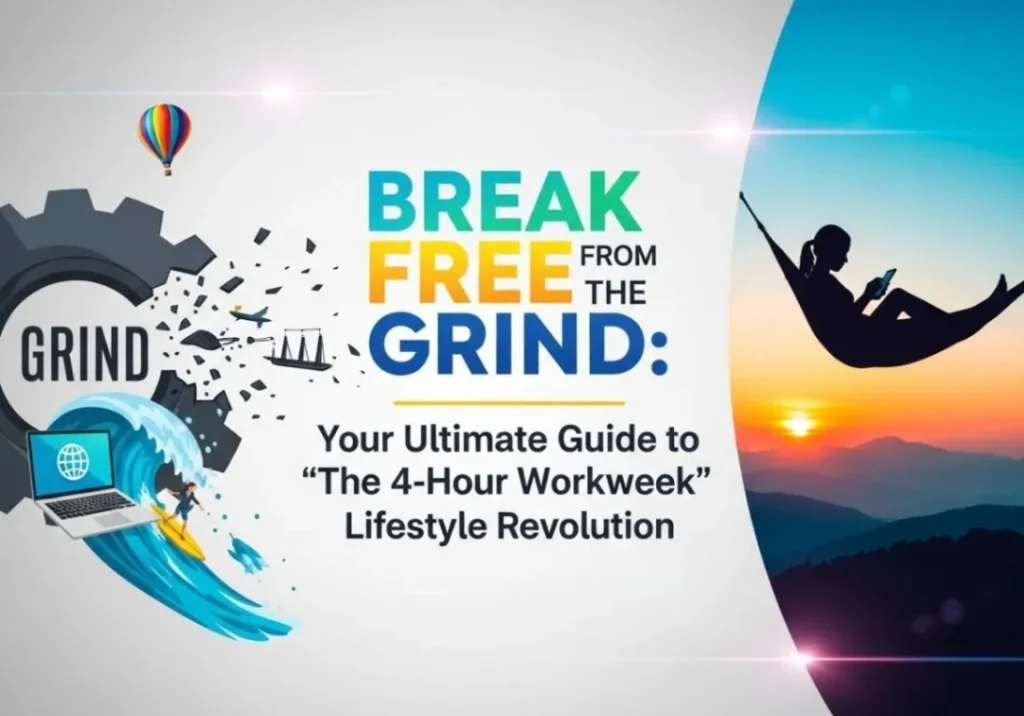Atomic Habits by James Clear: Your Ultimate Blueprint for Life-Changing Transformation

Introduction: The Flaw in Our Approach to Change
How often do you set a goal, brimming with motivation, only to watch it fade within weeks? You wanted to exercise daily, write a novel, or quit a nagging bad habit. You started strong, but life got in the way. We often blame ourselves, thinking we lack willpower. But what if the problem isn’t you? What if it’s your system?
This is the premise of James Clear’s groundbreaking book, “Atomic Habits: An Easy & Proven Way to Build Good Habits & Break Bad Ones.” This isn’t just another self-help book. It’s a meticulously researched, practical, and insightful operating manual for the human brain. Clear doesn’t just tell you what to do; he explains why it works, drawing from biology, psychology, and neuroscience.
In this guide, we’ll dive deep into the core principles of Atomic Habits. You’ll have a blueprint for making small, incremental changes that will compound into remarkable, life-altering results. Get ready to stop chasing goals and start building robust systems. It’s time to understand the science of atomic habits.
The Surprising Power of Atomic Habits: Why Small Changes Drive Monumental Results
The word “atomic” holds two crucial meanings: tiny, an indivisible part of a larger system, and the source of immense energy and power. A single habit, like a single atom, seems insignificant. We often dismiss these tiny actions because we don’t see immediate, dramatic results.
The 1% Better Philosophy: Unleashing the Magic of Compounding
James Clear introduces a powerful concept: If you get just 1% better each day for one year, you’ll end up thirty-seven times better by the end. Conversely, getting 1% worse daily will diminish your skills to almost zero. Habits are the compound interest of self-improvement.
The Plateau of Latent Potential: Understanding Why You Feel Stuck
If compounding is so powerful, why do we often give up? We expect progress to be linear, but the most powerful outcomes are delayed. Your habits work like an ice cube slowly warming: nothing appears to happen until it hits the melting point. Your work isn’t wasted; it’s simply being stored. Those who succeed persist through this plateau.
Forget Goals, Focus on Systems Instead: A Paradigm Shift
This is perhaps the most paradigm-shifting idea in the book. Clear argues that goals are a flawed approach because winners and losers share the same goals. The differentiator isn’t the goal, but the system of continuous small improvements.
The goal of a writer isn’t to write a book; it’s to build a system of writing daily. When you focus on your system, the goals take care of themselves.
The Three Layers of Behavior Change: Outcomes, Process, and Identity
Clear presents a model with three layers: Outcomes (what you get), Process (what you do), and Identity (what you believe). Most people try to change from the outside in (outcomes first), which creates internal conflict. The most effective way is to start from the inside out.
The Unstoppable Power of Identity-Based Habits
True behavior change is identity change. The goal isn’t to read a book; it’s to become a reader. When your behavior and identity are aligned, you’re not pursuing change; you’re simply acting in accordance with who you are.
How do you change your identity? 1. Decide the type of person you want to be. 2. Prove it to yourself with small wins. Each action you take is a vote for the person you wish to become.

The Four Laws of Behavior Change: Your Practical Framework
Every habit follows a four-step loop: Cue, Craving, Response, Reward. To build good habits, we use the Four Laws to make this loop work for us.
The Four Laws to Build a Good Habit:
- Make it Obvious.
- Make it Attractive.
- Make it Easy.
- Make it Satisfying.
The 1st Law: Make It Obvious
To make a habit obvious, make its cues visible. Use Implementation Intentions (“I will [BEHAVIOR] at [TIME] in [LOCATION]”) and Habit Stacking (“After [CURRENT HABIT], I will [NEW HABIT]”). Redesign your environment: put your running shoes by the door or fruit on the counter.
To break a bad habit (The Inversion): Make it Invisible. Reduce exposure to cues. Leave your phone in another room or don’t buy junk food.
The 2nd Law: Make It Attractive
Habits are driven by dopamine. Make a habit more attractive to increase the craving. Use Temptation Bundling by pairing an action you want to do with an action you need to do (e.g., “While on the treadmill, I get to watch Netflix”). Also, join a culture where your desired behavior is the normal behavior.
To break a bad habit (The Inversion): Make it Unattractive. Reframe your mindset. Instead of a “treat,” reframe junk food as “processed chemicals that drain my energy.”
The 3rd Law: Make It Easy
Human behavior follows the Law of Least Effort. Decrease the friction for good habits. Use the Two-Minute Rule: when starting a new habit, it should take less than two minutes. The point is to master the art of showing up. Also, reduce friction by laying out your workout clothes the night before.
To break a bad habit (The Inversion): Make it Difficult. Increase friction. Delete social media apps from your phone or move the cookie jar to a high shelf.
The 4th Law: Make It Satisfying
What is immediately rewarded is repeated. The human brain prioritizes immediate returns. To make a habit stick, you need to feel immediately successful. Use reinforcement by giving yourself an immediate reward, like putting a checkmark on a calendar. Also, use Habit Tracking to create a visual cue of your progress.
A crucial rule here is to Never Miss Twice. Missing once is an accident. Missing twice is the start of a new (bad) habit. Get back on track immediately.
To break a bad habit (The Inversion): Make it Unsatisfying. Create an immediate, unpleasant consequence. Get an accountability partner or create a habit contract where you face a penalty for failure.
Advanced Tactics: From Good Habits to True Mastery
- The Goldilocks Rule: Humans feel peak motivation on tasks right on the edge of their current abilities. To stay motivated, work on challenges that are not too hard and not too easy.
- The Truth About Talent: Genes don’t determine destiny, but they clarify what to work hard on. Play a game where the odds are in your favor by aligning your habits with your natural inclinations.
- The Importance of Review and Reflection: Habits can lead to complacency. Build in regular reflection (like an annual review) to ensure your habits continue to serve you well.
Conclusion: You Are Your Habits
Atomic Habits provides an evidence-based approach to getting 1% better daily. Transforming your life doesn’t require a quantum leap; it requires tiny, almost imperceptible steps taken with relentless consistency.
You do not rise to the level of your goals. You fall to the level of your systems.
Your current habits are perfectly designed to deliver your current results. If you want different results, change your systems. You don’t need more motivation; you need a better strategy. You can start right now, with a habit so small it seems insignificant.
Read one page. Do one push-up. Meditate for one minute. Start today. Cast a vote for the person you want to become. And then do it again tomorrow. Because the tiny changes, the atomic habits, are the ones that will ultimately build the life you desire.





Your Turn!
What’s the one atomic habit you will start today? Share your commitment in the comments below!